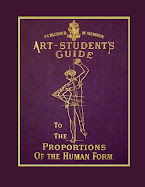
The Aphrodite of Cyrene (Kyrene) was excavated from Libya in the early years of the twentieth century from a site which had been destroyed by and earthquake and the antiquities preserved from around the fourth century B.C.
Here is a description from Art and Archaeology By Archaeological Institute of America, February 1921:
As soon as the country had been conquered we continued the excavation and restoration of its most important monuments, as well as the archaeological exploration of Tripolitania and Cyrenaica—already initiated by that distinguished and lamented American, Mr. Richard Norton, whom Art And Archaeology fittingly commemorated in December 1919. Valuable objects of art, that bear witness to the work accomplished by us, are now being collected in the two Italian museums at Tripoli and at Benghazi. One sole piece of sculpture, among the many found, has been taken to Rome, carrying a greeting from the ancient colony—the statue, that alone, might, perhaps, suffice to re-pay the expenses and perils of our war. The beautiful Aphrodite from Cyrene, now in the Museo delle Terme, is, perhaps, the most beautiful in the whole world—were it possible to draw a comparison between the goddesses of beauty. According to the learned essay by Prof. L. Mariani, chief of the Italian Archaeological Office in Libya, this masterpiece is an original by a Greek artist of the IV century before Christ, perhaps Euphranor of Corinth. The goddess, carved in a block of the choicest Parian marble, transparent and warm in color, is represented nude in the style of the Anadyomene, rising from the sea-waves at the moment of her first appearance to mortals, and all wet and just pressing the water fiom her hair, and combing it. A sense of shame, a tremor of the body at contact with the air because of its nakedness, makes the delicate form shiver a little; and it is this ingenuous movement that renders the virgin nudity of the goddess perfectly chaste. This exquisite sculpture was found in the great hall of the recently excavated baths, along with many other beautiful and interesting statues: two groups of the Graces, an Eros drawing his bow, a Satyr with the child Bacchus, a Hermes in the manner of Polyclitus, and the colossal statue of Alexander the Great. This whole figure, cast in a solemn mould, breathes force and power, and is animated by the genius of the hero. It is an interesting sculpture both because it may perhaps be a copy of Alexander with the lance by the sculptor Lysippus, and also because the face shows us the portrait, not of the idealized Alexander, but of the great leader, thoughtful, yet daring in action, who meditates his great undertakings, his battles and conquests.
All these sculptures were overthrown by one of those earthquakes that were among the causes of the decadence of Cyrenaica toward the close of the IV century B. c. The splendid Hall of the Thermae, which was divided in three parts by beautiful Corinthian columns with transenne formed by the two groups of the Graces, must have been like a museum; and it was here that the people loitered while waiting for their baths.
These excavations and discoveries have thrown light upon every aspect of history and life in ancient times, as well as upon art. An inscription tells of a road from Cyrene to Apollonia that was re-built by the Emperor Hadrian in 118, because it had been tumulto iudaico eversa et corrupta; that is: broken up and destroyed by the Jews from Egypt and Cyrenaica during an insurrection when 220,000 Greeks and Romans were massacred.
Two views of the sculpture.
Pictures of the site.
The Aphrodite of Knidos and Her Successors: A Historical Review of the Female Nude in Greek Art

Ancient Greek Portrait Sculpture: Contexts, Subjects, and Styles
















No comments:
Post a Comment